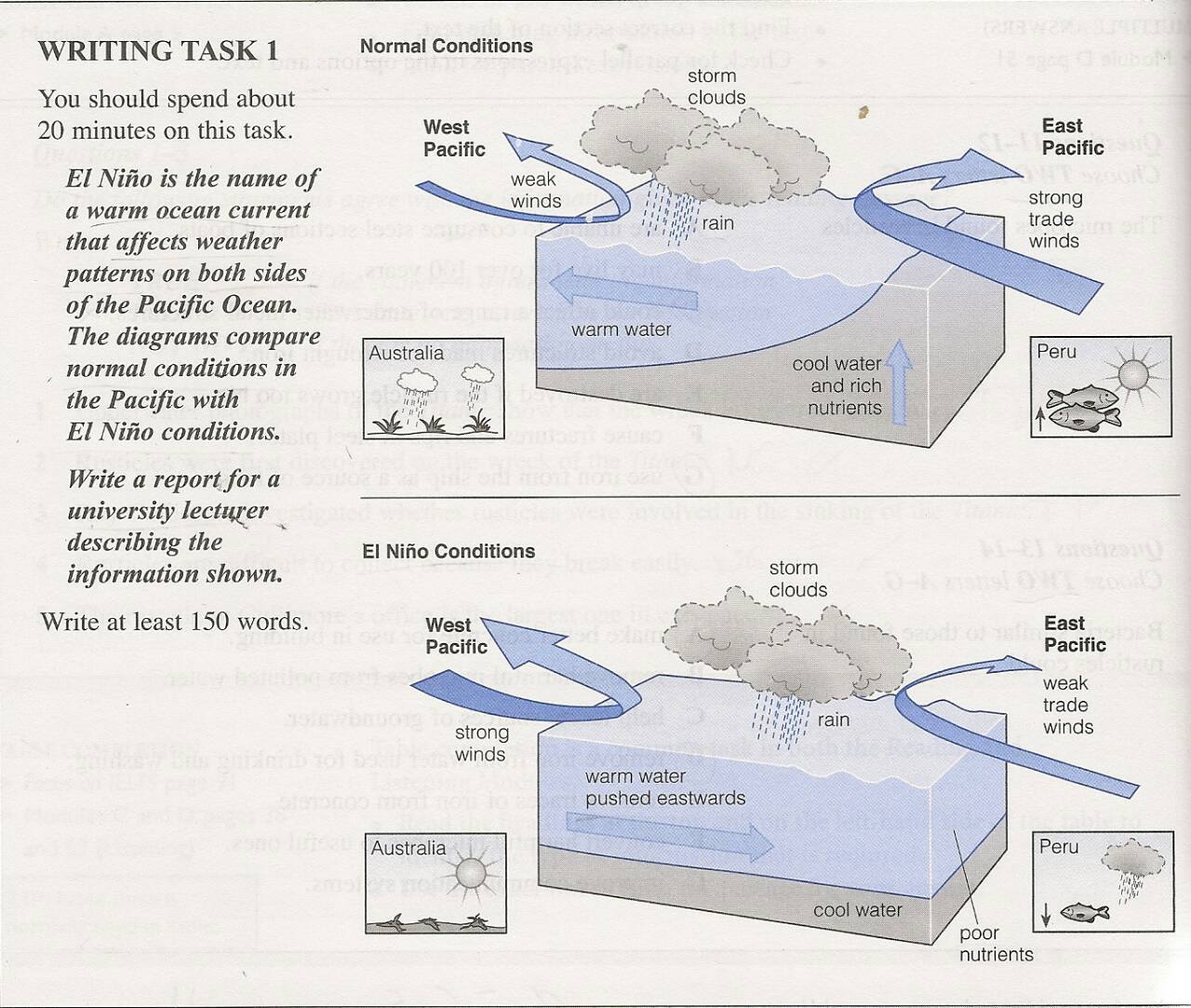The diagrams illustrate a comparison of El Nino conditions and normal pacific ocean conditions which affects climate in countries on both sides of the pacific ocean. Overall, it can be seen that the changes are in the wind strength that brings the conditions known as El Nińo.
To begin, the normal conditions in the first place, it shows on the first diagram wind from the east is stronger than wind from the west. Consequently, storm clouds have moved to west change the weather conditions to rain. Following this, warm water moves in the same direction as the wind, while cold water rises from the deep on the eastern side, which results in the increased number of fish near Peru due to more nutritious environment.
Move to El Nińo conditions, the situation has changed dramatically to strong wind now blows from the west side. That makes storm clouds and warm water move in the same direction as the wind. Both of these factors affect weather that there is the risk of drought in Australia, while in Peru, in contrast, it gets rainy. Another fact to mention is that the number of fish is going down in the coastal waters of Peru.
To begin, the normal conditions in the first place, it shows on the first diagram wind from the east is stronger than wind from the west. Consequently, storm clouds have moved to west change the weather conditions to rain. Following this, warm water moves in the same direction as the wind, while cold water rises from the deep on the eastern side, which results in the increased number of fish near Peru due to more nutritious environment.
Move to El Nińo conditions, the situation has changed dramatically to strong wind now blows from the west side. That makes storm clouds and warm water move in the same direction as the wind. Both of these factors affect weather that there is the risk of drought in Australia, while in Peru, in contrast, it gets rainy. Another fact to mention is that the number of fish is going down in the coastal waters of Peru.

12318167_10207040900.jpg
